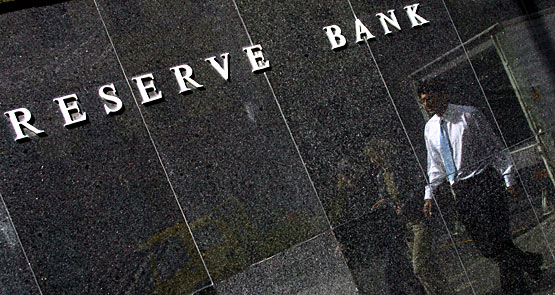
Ask the Reserve Bank. Have a quiet read of the Reserve Bank’s first Statement on Monetary Policy for 2016, where you will find some quite stunning news about workplace flexibility, especially wages. Call it the Dummies Guide to What’s Happening in the Economy. Here’s what the Reserve Bank observed:
“Overall, some decline in wage growth would be expected given a period of spare capacity in the labour market. However, the decline has been more pronounced than that implied by the historical relationship with the unemployment rate. Several factors may help to explain this, including the lower level of inflation expectations and what appears to have been an increase in labour market flexibility that may have provided firms with greater scope to adjust wages in response to a given change in demand for their goods and services.
“Unit labour costs have been little changed for around four years because labour productivity (output per hour worked) and average earnings have grown at broadly the same pace. This is likely to have encouraged firms to employ more people than they would have otherwise. Together with the depreciation of the exchange rate over recent years, low unit labour cost growth is also helping to restore the international competiveness of Australia’s labour, following a period of relatively strong growth in unit labour costs.
“Average labour productivity and multifactor productivity growth have picked up somewhat, after slowing through the mid 2000s. This improvement in productivity growth has been broad based across industries, just as the slowdown in the mid 2000s was broad based.”
— Glenn Dyer
Well, spare their daze. That’s something you have never heard or seen written by any of the above the chorus of shills for the conservative side of politics and the economy. Who would have thought? A more flexible work force, low wage growth (and low levels of industrial disputation, as the Bureau of Statistics data shows) and low inflation (and expectations) have helped the economy make the change from the resources boom to more broadly driven domestic activity, lately aided by the lower value of the dollar and improving competitiveness. Nirvana, so what has the lazy non-mining business been doing? Sitting on their balance sheets and paying shareholders rather than investing for the future. That has been happening, without being spotted by our economic aviary. Presumably the broad-based “improvement in productivity” the RBA refers to also takes in cafes etc, where the government wants to cut Sunday penalty rates, and more, and the building and construction industries, where the government wants to monster the unions (but not the at-times naughty employers) — in the name of controlling corruption and improving productivity. Well, fancy that! — Glenn Dyer
It’s banks globally, not just Aussies. Many local analysts, business media and others reckon our banks finances are in danger of being hit hard by what is happening in China and locally as the housing boom slows. The Commonwealth Bank will provide some insight into these fears (many of which are being stirred up by greedy hedge funds looking to trade the rising volatility in the sector) when it reports its interim result on Wednesday morning. Well, the bank gloom story is not exclusively Australian, as many of these doomsters would have you believe. If you lift your eyes to the horizon and peer offshore you find there has been a widespread sell-off in banks in the US, Asia and in Europe in particular. Up to Friday, the CBA had lost 17% in value on the past year, Westpac, 17.55%, NAB, 25% and ANZ 31%. But Credit Suisse in Switzerland has fallen 30%, Bank of America, Goldman Sachs, Morgan Stanley and Citi are down 21%, 14%, 31% and 19% respectively, and shares in Amex have fallen 23%.
In Italy, shares in UniCredit have shed 41% (bad debts are a big, big worry for investors and regulators) Banca Monte dei Paschi shares have plunged more than 66% as doubts grow about its ability to survive, Deutsche Bank in Germany has lost 32% in value, Barclays in the UK has dropped 31% and in France BNP has “only” lost 9%, and shares in Soc Gen have dropped nearly 12%. Global giant HSBC has shed 28% of its value, and shares in Banca Santander, the Spanish based pan-European giant, has slumped 37%. If you are believer in market signals, these widespread falls (some larger than during the euro crises from 2010 through 2013) are a warning that tough times, perhaps recessions, lie ahead. Investors are heading for safety, not leverage (as you get in banks). But central banks have generated much of this by driving down interest rates to negative levels in more and more countries through quantitative easing and other measures, which in turn hurts the earnings of banks large and small. — Glenn Dyer







Crikey is committed to hosting lively discussions. Help us keep the conversation useful, interesting and welcoming. We aim to publish comments quickly in the interest of promoting robust conversation, but we’re a small team and we deploy filters to protect against legal risk. Occasionally your comment may be held up while we review, but we’re working as fast as we can to keep the conversation rolling.
The Crikey comment section is members-only content. Please subscribe to leave a comment.
The Crikey comment section is members-only content. Please login to leave a comment.